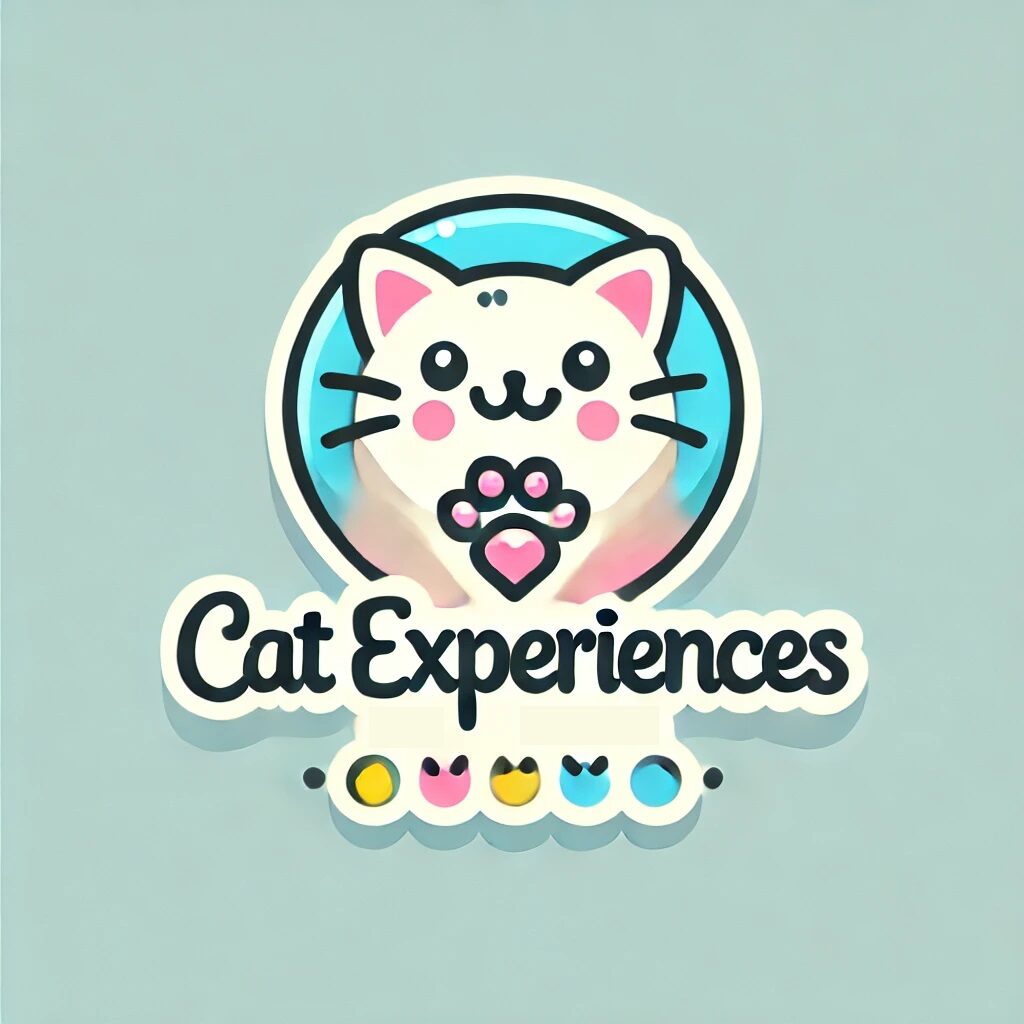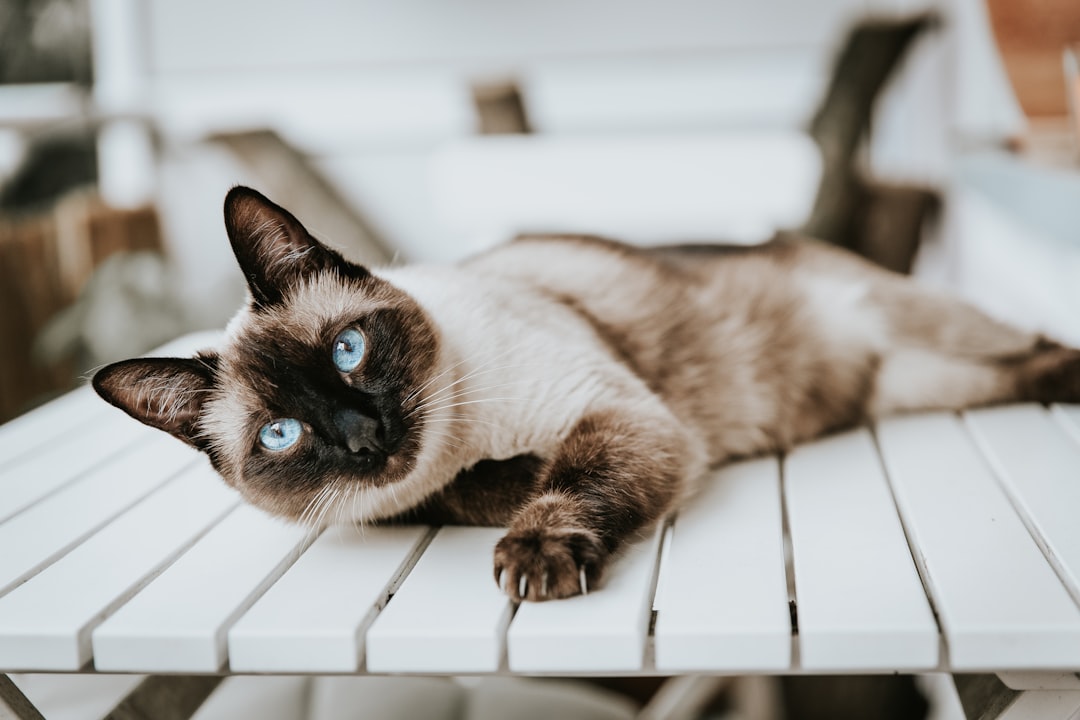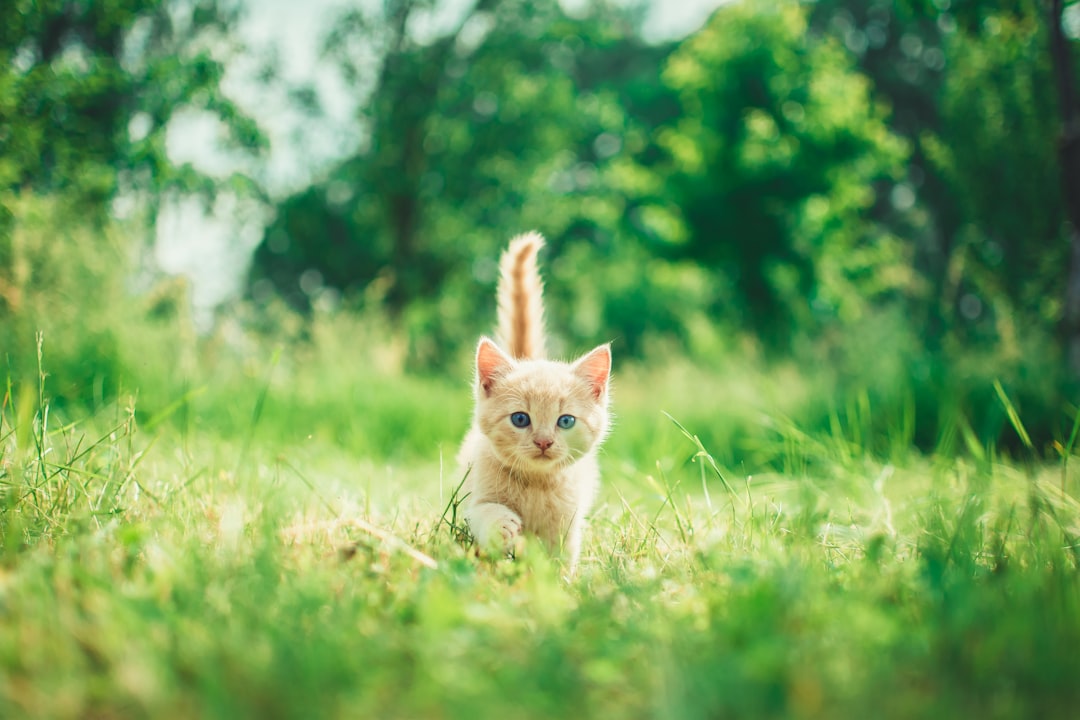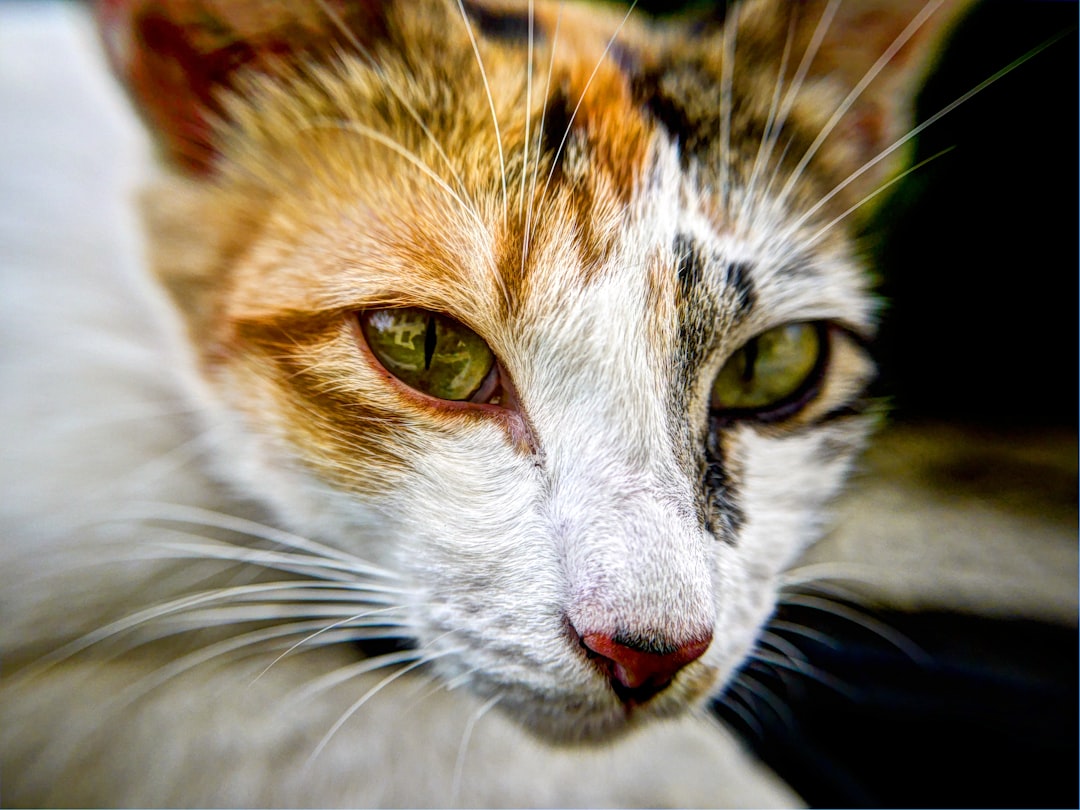As a devoted pet parent, understanding the eating habits of your feline friend is crucial for their overall well-being. While cats can be picky eaters, it’s important to recognize when their behavior indicates a potential problem. Noticing Signs your cat is not eating enough can help you take prompt action to ensure they remain healthy and happy. In this blog post, we will explore various factors that influence a cat’s appetite, identify key indicators of inadequate food intake, and discuss actionable strategies to encourage healthy eating habits. By being vigilant and informed, you can help your cat thrive while enjoying their mealtimes to the fullest.
Understanding Normal Eating Habits in Cats
To ensure the overall well-being of your feline friend, it’s essential to understand their normal eating habits. A cat’s diet plays a crucial role in its health and energy levels. By familiarizing yourself with their typical eating behaviors, you can more easily identify any changes that may indicate a problem.
Typical Portion Sizes for Cats
Cats, like humans, require a balanced diet, but portion sizes can vary significantly based on factors like age, weight, and activity level. On average:
| Age Group | Daily Caloric Intake | Typical Portion Size |
|---|---|---|
| Kittens (up to 6 months) | 200-250 calories | 3-4 small meals a day |
| Adult Cats (1-7 years) | 200-300 calories | 2 meals a day |
| Senior Cats (7+ years) | 180-250 calories | 1-2 meals a day |
Frequency of Feeding Sessions
Feeding frequency is an important aspect of a cat’s eating habits. Generally, adult cats benefit from two meals per day, while kittens may require more frequent feedings. Consider the following:
- Kittens: Prefer small meals multiple times throughout the day to support their rapid growth.
- Adult Cats: Thrive on a routine, ideally receiving their daily calories spread across two meals.
- Senior Cats: May have varying appetites, so monitor their intake closely to ensure proper nutrition.
Understanding these normal eating habits in cats establishes a baseline for your pet’s dietary needs. By observing their eating patterns, you can detect changes that warrant attention, helping ensure a healthy and happy kitty.
Signs Your Cat Is Not Eating Enough
Physical Indicators to Watch For
Cats communicate their health through their physical condition. Here are some key signs your cat is not eating enough:
| Physical Sign | Description |
|---|---|
| Weight Loss | Noticeable reduction in body mass or ribs becoming more prominent. |
| Sunken Eyes | Eyes may appear more sunken or dull than usual. |
| Dry or Dull Coat | The fur may lose its sheen and appear brittle or unkempt. |
| Dehydration | Signs include dry gums, lethargy, and skin elasticity issues. |
Behavioral Changes That May Indicate Reduced Appetite
Behaviors can reveal hidden issues. If your cat is showing any of the following changes, it could suggest an inadequate food intake:
- Increased Irritability: A normally sociable cat may become less tolerant of interaction.
- Hiding: Cats may seek out hiding spots if they’re not feeling well.
- Decreased Activity: Lack of energy can indicate they are not getting the necessary nutrients.
- Disinterest in Play: If your cat used to enjoy playtime but suddenly loses interest, this may be a red flag.
By paying close attention to these indicators, you can take proactive steps to ensure your feline companion remains healthy and happy.
Weight Loss and Its Implications
How to Monitor Your Cat’s Weight
Keeping track of your cat’s weight is crucial for maintaining its overall health. Here are some effective methods to monitor your feline friend’s weight:
- Regular Weigh-Ins: Check your cat’s weight every two to four weeks. A spare kitchen scale can help you weigh your cat at home.
- Body Condition Scoring (BCS): Use the BCS chart, which ranges from 1 to 9, to assess your cat’s body fat and muscle mass. Ideal cats generally score between 4 and 5.
- Visual Inspection: Pay attention to physical appearance. An ideally-weighted cat should have a defined waist and ribs that can be felt with slight pressure.
- Record Keeping: Maintain a log of your cat’s weight, noting any fluctuations. This will help you identify trends that might require a vet visit.
Health Risks Associated with Sudden Weight Loss
Sudden weight loss in cats can lead to several health problems, including:
| Health Risk | Description |
|---|---|
| Fatty Liver Disease | Excess fat accumulates in the liver, potentially leading to liver failure. |
| Muscle Wasting | Prolonged weight loss can result in muscle deterioration, affecting mobility and strength. |
| Weak Immune System | Weight loss often indicates underlying issues, which can further compromise your cat’s immunity. |
| Nutritional Deficiencies | An inadequate intake of essential nutrients may lead to various deficiencies, impacting organ function. |
Recognizing signs your cat is not eating enough and taking immediate action is paramount. Addressing weight loss early can save your cat from serious health implications, ensuring a happier and healthier life for your furry companion.
Signs Your Cat Is Not Eating Enough
What Normal Stool Looks Like
Understanding what constitutes normal stool for your feline friend is crucial in monitoring their health. Normal stool in cats is typically:
- Firm and well-formed: It should hold its shape but not be too hard or dry.
- Brown in color: A healthy stool will usually have a chocolate-brown hue.
- Minimal odor: While all cat waste has a smell, overly pungent or foul odors may indicate a dietary issue or digestive problems.
Monitoring your cat’s stool can provide vital insight into their eating habits and overall health.
Signs of Constipation or Diarrhea
When assessing the signs your cat is not eating enough, pay close attention to any changes in their stool behavior. Two common issues you may encounter are constipation and diarrhea, both of which can indicate insufficient food intake:
| Stool Condition | Signs | Possible Implications |
|---|---|---|
| Constipation | – Hard, dry stool – Straining to defecate – Less frequent bowel movements | May lead to discomfort, lethargy, and further digestive disorders. |
| Diarrhea | – Loose, watery stool – Increased frequency of defecation – Incontinence | Can result from dietary changes, infections, or stress, and may indicate dehydration if prolonged. |
Promptly addressing these changes is crucial. A sudden shift in a cat’s stool consistency may not only indicate that they are consuming inadequate amounts of food, but it can also point to underlying health issues. If you notice consistent problems, consult your veterinarian for guidance.
Relationship Between Hydration and Food Intake
Maintaining proper hydration is crucial for your cat’s overall health and can significantly affect their appetite. A well-hydrated cat is likely to be more inclined to eat, whereas dehydration can lead to diminished food intake. Below, we explore the relationship between hydration levels and a cat’s desire to eat, including the signs to watch for.
Signs of Dehydration in Cats
Recognizing dehydration in your cat is essential for their health. Here are some key indicators to monitor:
- Dry mouth and gums: Check to see if your cat’s mouth feels sticky or if the gums appear dry.
- Loss of elasticity in skin: Gently pinch your cat’s skin; if it doesn’t return quickly to its original position, this may signify dehydration.
- Decreased energy levels: Lethargy or lack of interest in play can indicate that your cat isn’t getting enough fluids.
- Sunken eyes: This can be a more serious sign of dehydration that requires immediate attention.
Importance of Water Intake for Appetite Regulation
Water intake plays a fundamental role in stimulating your cat’s appetite. Here’s why it matters:
| Aspect | Explanation |
|---|---|
| Digestive Health | Proper hydration helps digestion, allowing your cat to process food effectively. |
| Nutrient Absorption | Water is necessary for the absorption of nutrients; without it, your cat may feel less inclined to eat. |
| Kidney Function | Adequate hydration reduces the burden on the kidneys, contributing to overall well-being. |
| Temperature Regulation | Proper water intake helps maintain body temperature and can prevent stress-related appetite loss. |
Ensuring your cat has constant access to fresh water can promote better eating habits and overall resilience. Remember, observing signs of dehydration is vital, as promptly addressing these symptoms can improve your cat’s appetite and health.
Signs Your Cat Is Not Eating Enough
Impact of Stress on Eating Habits
Stress can significantly hinder your cat’s appetite. Just like humans, cats can experience stress from various sources, which can lead to a decline in food intake. Here are some common stressors:
- Environmental Changes: Moving to a new home or introducing new pets can overwhelm your cat.
- Loud Noises: Thunderstorms, fireworks, or construction sounds can make cats anxious.
- Disruption in Routine: Cats are creatures of habit; changes in feeding schedules may upset them.
When assessing whether your cat is eating enough, observe their behavior in relation to these stress factors. A stressed cat may hide, vocalize more, or display other signs of anxiety, all of which could contribute to reduced food consumption.
Seasonal Changes and Their Effects on Appetite
Seasons can also play a role in your cat’s eating habits. The following changes have been observed:
- Climate Effect: During hot summer months, cats may eat less due to lower energy needs brought on by cooler habitats.
- Winter Months: As temperatures drop, some cats may increase their appetite in preparation for keeping warm.
Here’s a quick comparison table outlining seasonal effects:
| Season | Potential Appetite Impact | Reasons |
|---|---|---|
| Spring | Increased activity, potential decrease in food intake | Mating behaviors, mild weather |
| Summer | Decreased appetite | Heat and reduced energy |
| Autumn | Stable appetite | Preparation for winter |
| Winter | Possible increased appetite | Need for warmth, energy |
Understanding the signs your cat is not eating enough during seasonal shifts allows you to better cater to their needs, ensuring their health and well-being in varying climates.
Health Issues Linked to Reduced Appetite
Common Medical Conditions That Affect Eating
A reduced appetite in cats can be a warning sign of underlying health issues. Understanding these conditions can help you differentiate between normal fluctuations in eating habits and serious health concerns. Here are some common medical conditions linked to decreased appetite:
| Condition | Symptoms | Notes |
|---|---|---|
| Dental Disease | Bad breath, difficulty chewing | Pain from dental issues can deter eating. |
| Gastrointestinal Disorders | Vomiting, diarrhea, abdominal pain | Conditions like IBD or parasites can affect their desire to eat. |
| Kidney Disease | Increased thirst, lethargy | This chronic condition often leads to decreased appetite. |
| Hyperthyroidism | Weight loss despite increased activity | This common condition in older cats can cause appetite suppression. |
| Infections | Fever, lethargy, coughing, vomiting | Infections can result in nausea and appetite loss. |
When to Consult a Veterinarian About Appetite Changes
If your cat displays signs of not eating enough, it’s crucial to monitor their condition closely. Here’s a quick guide to help you determine when to seek veterinary assistance:
- Consistent appetite loss: If your cat refuses food for more than 24 hours.
- Weight loss: Noticeable weight changes over a week.
- Accompanying symptoms: Presence of vomiting, diarrhea, or lethargy.
- Behavioral changes: Sudden shifts in demeanor, such as hiding or aggression.
Your awareness of these potential health issues will enable you to act quickly, ensuring your cat remains happy and healthy. Remember, timely intervention can make a significant difference in your cat’s recovery and well-being.
Understanding Behavioral Reasons for Food Refusal
Changes in Routine and Their Impact
Cats are creatures of habit, and any disruption in their daily routines can significantly impact their eating habits. Common changes that can lead to food refusal include:
- New Environment: Moving homes or introducing new pets can create stress.
- Alterations in Feeding Schedule: Changes in when or how often meals are provided may confuse them.
- Introduction of New Family Members: This can lead to territorial behavior, causing your cat to eat less.
Such disruptions can lead to anxiety, prompting your cat to refuse food. It’s essential to observe any recent changes in your household and consider how they might affect your pet’s well-being.
Potential Food Preferences and Picky Eating
Similarly, some cats exhibit specific food preferences or may become picky eaters. Things to note include:
- Texture and Flavor: Many cats have favorites; some prefer wet food over dry food or vice versa.
- Variety: Introducing new flavors or types of food can encourage a more adventurous appetite.
- Food Temperature: Cats often prefer their food warmed slightly to enhance aroma.
| Behavioral Reasons | Impact on Eating Habits |
|---|---|
| Changes in routine | Stress leading to decreased appetite |
| Strong food preferences | Refusal of meals that don’t match tastes |
| Environmental stress | Reluctance to eat in unfamiliar settings |
| Table scraps or overly rich food | Disinterest in regular feeding |
By recognizing these behavioral reasons for your cat’s food refusal, you can take steps to create a more inviting feeding environment and encourage healthy eating habits.
Monitoring and Encouraging Healthy Eating Habits
Keeping an eye on your feline friend’s eating habits is essential to ensure they receive adequate nutrition. Below are vital strategies to monitor and encourage healthy eating habits in your cat.
Tips to Make Meals More Appealing
Cats can be picky eaters; thus, it’s essential to entice them with appealing meals. Here are some tips:
- Select High-Quality Food: Choose a well-balanced, high-quality cat food tailored to your cat’s age, weight, and health needs.
- Warm Up the Food: Slightly warming wet food can enhance its aroma, making it more enticing.
- Add Variety: Rotate between flavors and types (wet and dry) to keep their meals interesting.
- Incorporate Toppers: Add tasty, safe toppings like fish flakes or catnip to pique their interest.
- Serve Fresh Water: Ensure that your cat has constant access to fresh water. Sometimes, dehydration can mimic issues with food intake.
How to Create a Consistent Feeding Schedule
Establishing a routine can help your cat develop healthy eating habits. Consider these strategies:
- Set Specific Meal Times: Feed your cat at the same time each day to create a predictable routine.
- Portion Control: Measure food according to guidelines to avoid overfeeding or underfeeding.
- Monitor Eating Patterns: Keep a log of your cat’s eating habits to identify any changes over time.
- Limit Treats: While treats can be rewarding, excessive amounts can disrupt their regular meal pattern.
By implementing these practices, you can better monitor your cat’s dietary habits and promote a well-rounded eating routine, ensuring they are healthy and happy. Remember, ** signs your cat is not eating enough** may indicate a need for an immediate review of their eating environment and habits.
Frequently Asked Questions
What are the common signs that my cat is not eating enough?
Common signs that your cat is not eating enough can include noticeable weight loss, a lack of energy, and a change in behavior. You might find that your cat is more lethargic than usual, is avoiding playtime, or is hiding more often. Additionally, you may notice that their grooming habits decline, as cats typically groom themselves less if they are feeling unwell. Lastly, check the food and water bowls; if the food remains untouched over a day or two, it could be an indicator of a problem.
How can I encourage my cat to eat more?
To encourage your cat to eat more, consider offering a variety of food options, including both wet and dry food. You could warm wet food slightly in the microwave to enhance its aroma, making it more appealing. Additionally, try feeding your cat smaller, more frequent meals throughout the day instead of one or two larger meals. Creating a calm feeding environment, away from distractions and other pets, can also help. Lastly, consult your veterinarian if the problem persists, as they can provide tailored advice and rule out any underlying health issues.
How long should I wait before worrying about my cat’s appetite?
If your cat has gone without food for 24 hours, it’s wise to start monitoring their behavior and eating habits closely, as this can indicate a potential health issue. Cats’ livers can become compromised without nourishment, leading to a condition called hepatic lipidosis if they do not eat for extended periods. If your cat has not eaten for more than 24 hours or shows other concerning signs such as vomiting or diarrhea, it’s strongly recommended to contact your veterinarian for further guidance and potential examination.
What health issues could cause my cat to stop eating?
There are many health issues that could cause your cat to stop eating. Dental problems, such as gingivitis or tooth decay, can lead to pain while eating, causing them to avoid food. Gastrointestinal disorders, kidney disease, or liver issues can also suppress appetite. Additionally, stress and anxiety caused by changes in the home environment or the presence of new pets can lead to a decrease in food intake. Identifying any accompanying symptoms is crucial, so if you notice a lack of appetite along with other unusual behaviors, consulting a veterinarian is advisable.
Should I change my cat’s food if they aren’t eating?
Before changing your cat’s food when they show a lack of appetite, it’s essential to first understand the root of the issue. Switching to a new food without addressing possible health concerns could worsen the situation. However, if your cat is otherwise healthy but is simply bored with their current food, introducing a new flavor or texture can be beneficial. Always make any food transition gradually to avoid digestive upset. If eating issues persist despite changes, seek advice from a veterinarian who can offer guidance tailored to your pet’s needs.



